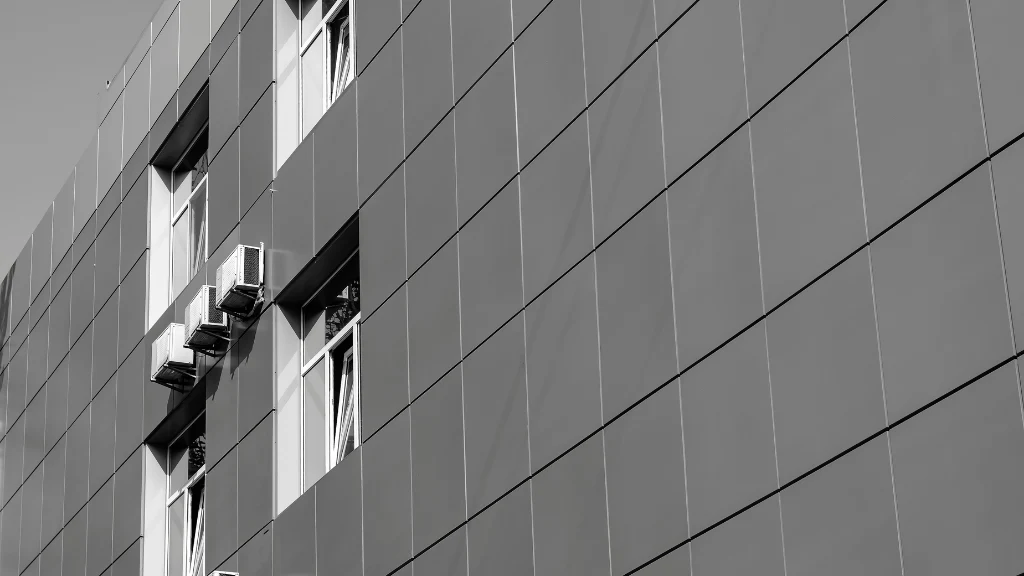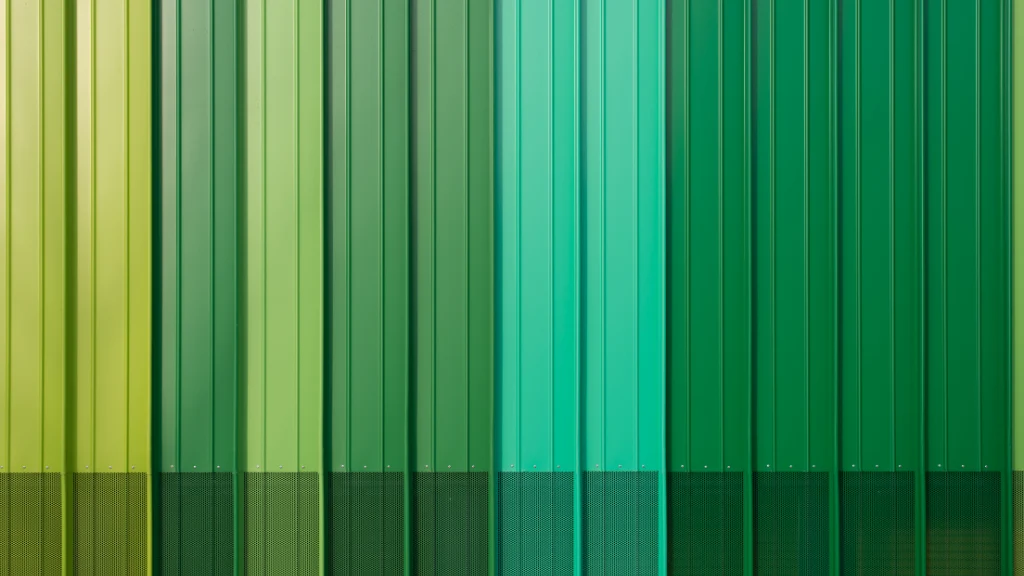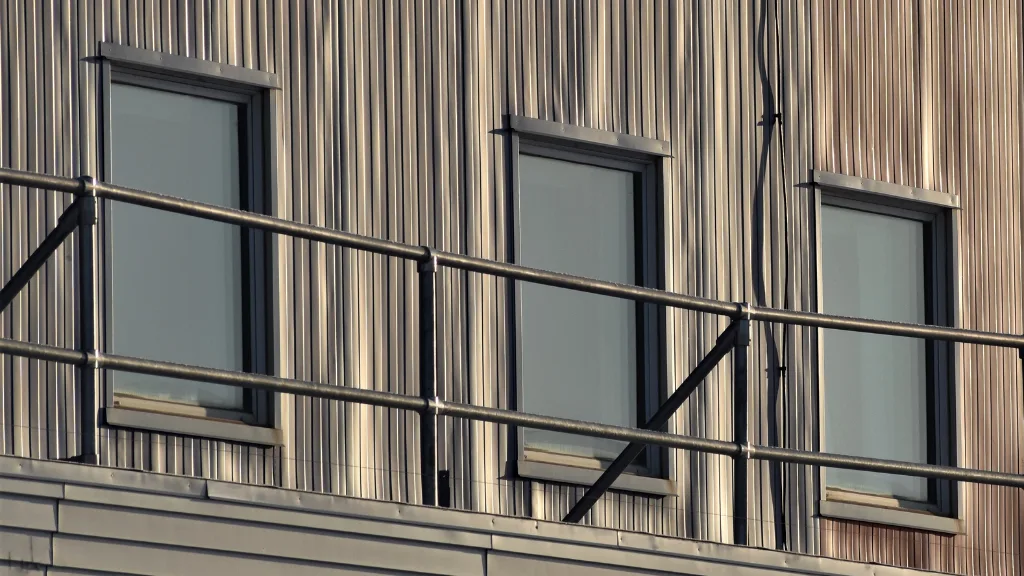
Metal siding is a great option for those looking to improve the exterior appearance of their home.
It can be stained or coated with a variety of different finishes, and it is available in many different colors.
There are two types of engineered siding that are popular – HardiePlank fiber cement and LP SmartSide.
There are some cons that come with metal siding as well, including costs and installation requirements. In this post we dive into the pros and cons of metal cladding so that you can decide if it’s right for your needs!
Uses of a Metal Siding
There are four main types of metal siding: steel, copper, aluminum, and zinc. Metal is a great material for siding and for wall cladding. It has a number of benefits that make it worth the money, including durability and longevity.
When you choose metal cladding for your home or business, this means that you are making an investment in its future value.
You will enjoy many years of flawless performance before having to worry about replacing it again. A lot of homeowners find themselves replacing their siding after about 20 years, which is significantly longer than what it takes for other materials to show wear.
The fact that metal siding does not need to be replaced constantly will save you money in the long run.
You won’t have to worry about any tedious maintenance or repairs either because there’s nothing but steel behind your wall cladding!
Of course, metal is not for everyone. If you are looking to reduce your home energy costs with exterior wall panels, then this might not be the right choice for you.
Your siding will act as an insulator against cold temperatures in winter and hot temperatures during summertime months. This means that it’s more likely to keep your property heated or cooled, which will raise your energy bills.
Basic Cost of a Metal Siding
It costs on average $8.50 to install metal siding per square foot. The total cost per square foot will depend on the choice of material, number of levels and overall difficulty of work, as well as your home’s location.
The cost of a metal for a home’s exterior wall can range from $15 to $25 per square foot. The cost for copper siding can range from $20.00 to $35.00 per square foot installed, depending on the type of installation and whether it’s being used in a residential or commercial application.
The cost of a 2,000 square feet steel or aluminum siding project can range from $17,000 to $31,000. The cost of installing copper or zinc is $41,000 for zinc and up to $70,000 if you go with copper.
Metal Siding Materials Compared
Steel and aluminum are two materials for construction that can be priced by thickness, coating finish, or other factors.
The thickness of steel is measured in gauges, with lower numbers translating to thicker pieces or sheets of metal. Steel comes in various gauges and 26-gauge is one of the most popular for residential use.
Steel panels are available in various gauges for sheathing and wall cladding for residential structures applications. 26-gauge galvanized steel panels are often recommended for siding and cladding for your walls.
The material costs of foam, that is backed and with simulated log siding ranges from $4.75 up to $5.75 per sq ft.
There is a log siding company called TrueLog Siding that offers two different types of metal for their products, depending on the customer’s preference.
Aluminum measurements are in inches, with specific values by thousandths. The greater the thickness, the better wind resistance and less chance of denting.
Coated Steel vs. Aluminum
Steel is better at retaining paint than aluminum. The chemical process which protects steel from corrosion is to apply a final layer of protection such as galvanizing or galvalume.
Zinc-coated steel is called galvanized, while Galvalume steel is a better option and has both zinc and aluminum in it.
Kynar 500 / Hylar 5000 Paint Finishes
You should use quality, factory finished paint to protect your metal from corrosion. Trade names Kynar 500 or Hylar 5000 are used to coat metal with a layer of paint.
Copper and Zinc
Zinc and copper are metal substances that are more expensive because they’re resistant to corrosion.
A patina results when a material is left in the open for an extended period of time and will appear on both materials.
A new copper siding or cladding starts out in a green color that protects the material. Zinc is the most affordable of all metals and changes color for a long time.
A self-healing coating will remove minor scratches, and should therefore be seen as a protective layer. A metal is patinated over time and no longer needs to be painted.
Style Options of Metal Siding
From the mid 1900’s to around 1980, aluminum siding was quite popular. Vinyl siding became the most popular choice of siding in America, quickly overtaking aluminum.
Metal is a versatile material for residential siding, and has stylistic considerations like cedar, fiber cement and stone.

Metal Siding Pros
- Metal siding is a durable and versatile product that has different price ranges to suit all budgets.
- Metal siding is a recyclable eco-friendly material that does not rot or attract insects.
Metal Siding Cons
The process of installing metal siding is time-consuming and requires a lot of heavy lifting.
Metal can rust if it’s not properly painted or maintained over time, which will lead to peeling paint and water damage.
- Old-school metal siding, such as steel that is painted, can scratch and corrode easily.
- A single scratch may not be noticeable, but over time, multiple scratches can add up and lead to problems.
- Scratching of metal can accelerate the corrosive properties.
The above concerns lead to better metal coating measures due to the fact that:
- Materials in construction can rust or scratch, making metal surfaces difficult to use.
- Installation fees for labor are higher than other types of installation
- Finding experienced contractors for metal siding is difficult due to lack of popularity.
- Metal siding can make a sound during windy and stormy weather.
Why Do People Still Opt to Choose Metal Sidings?
People choose metal siding for its versatility, durability and affordability.
Powerful wind can affect the strength of a house, but metal’s weather resistance is high-quality.
While some materials are affected by exposure to rainfall or moisture, steel resists rust due to oxidation during humid conditions.
Metal siding is a timeless and versatile product that has stood the test of time.
New paint finishes and coatings make metal siding easier to maintain, which is why people choose this material for their homes.
Designed with beautiful patterns and styles that suit any taste or preference. The possibilities are endless when it comes to the appearance of your home siding!
People also use aluminum siding because:
- The look of steel is timeless
- It’s resistant to corrosion and rust
- The material does not rot or attract insects
Metal siding has affordable options that can fit any budget. It’s recyclable, environmentally friendly and eco-friendly with the right measures in place.
And it comes in different price ranges suitable for all budgets!
Conclusion About Using Metal Siding
Metal siding is a versatile and durable material that also offers different style options like cedar, fiber cement and stone.
Metal gives homeowners the opportunity to choose their personal preferences without breaking the bank! It’s an eco-friendly product that does not rot or attract insects.
And it requires low maintenance as long as you keep up with the right measures and procedures.
So make sure that if you’re going to decide on this, make sure to hire the right contractor for the job.


